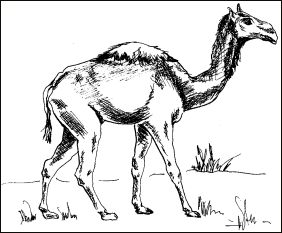

Focusing on our own little world may have advantages in day to day survival, but events in far away places have the nasty habit of intruding. This is true not only today, but throughout the history of the universe.
One example that helped change the nature of our Chihuahuan Desert is an event that happened far south of us, in Central America, some 3 to 4 million years ago. What happened? The previously separate continents of North and South America became joined by a land bridge, both separating the Pacific Ocean from the Caribbean and allowing a dry-land passage between the continents for land animals. Thus began what often is known as the Great American Interchange.
Our Chihuahuan Desert fossil faunas show the result, among which are
the dramatically large ground sloths and the huge, armored glyptodont. Even today, the
porcupine wanders through our desert landscape, a descendent of a South American rodent
that crossed the Panama Land Bridge, every much a pioneer as humans who entered North
America over the Bering Land Bridge millions of years later.

Contributor: Arthur H. Harris, Laboratory for Environmental Biology, Centennial Museum, University of Texas at El Paso.
Desert Diary is a joint production of the Centennial Museum and KTEP National Public Radio at the University of Texas at El Paso.

Sketch by Florence Schwein of the North American extinct camel, Camelops
hesternus. ![]()
Stehli, F. G., and S. D. Webb, eds. 1985. The Great American Biotic Interchange, Plenum Press. 536 pp.
Land Bridge. Somewhat technical. SAM=South American mammals; NAM=North American mammals.